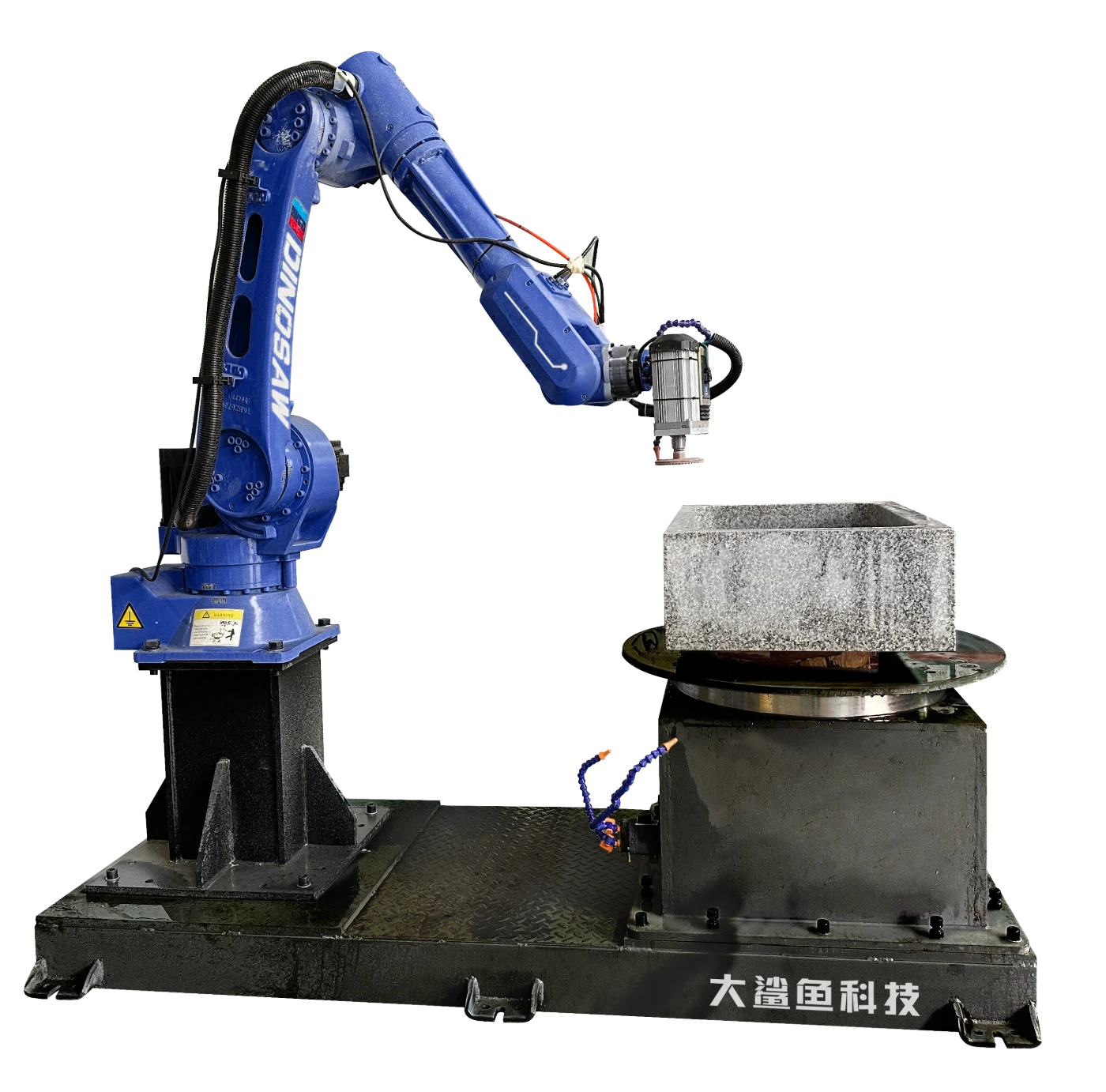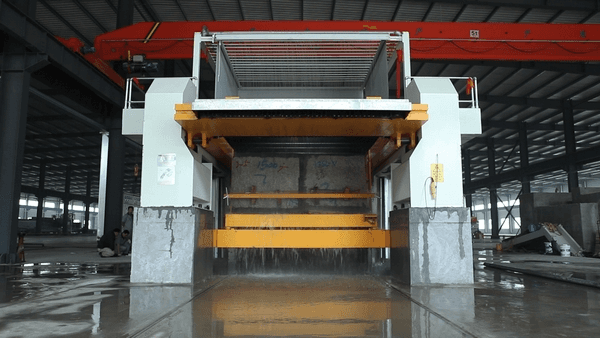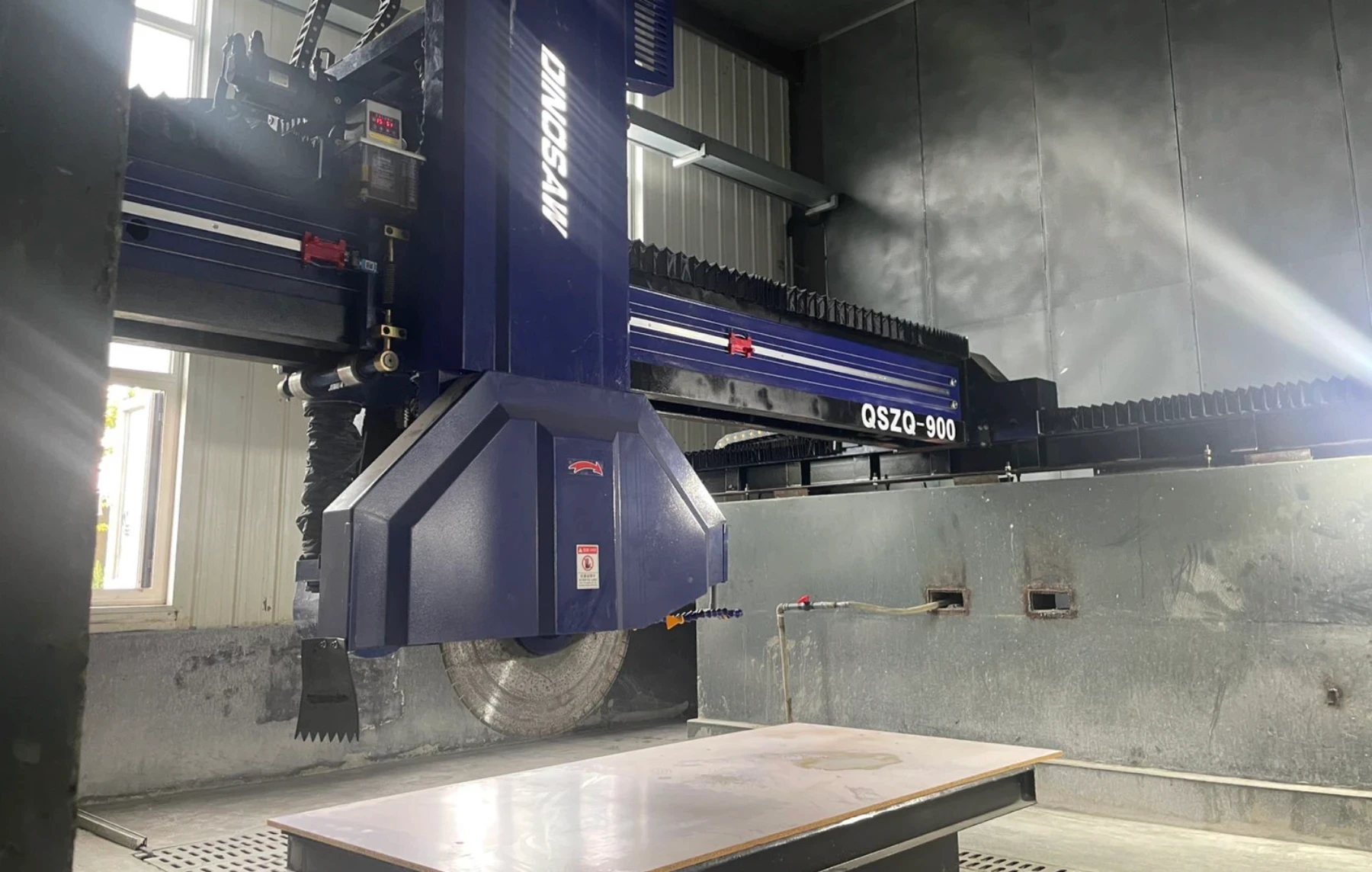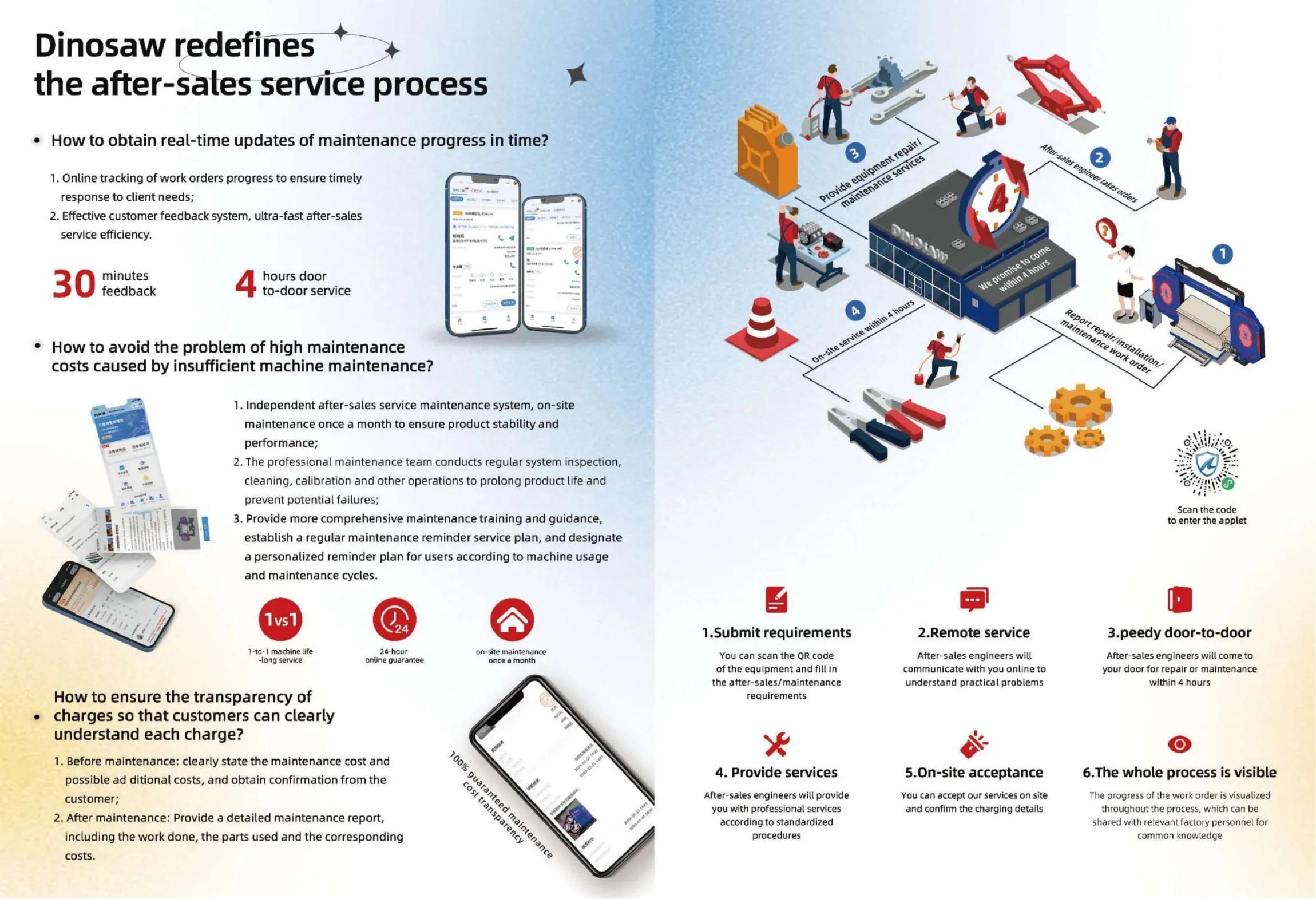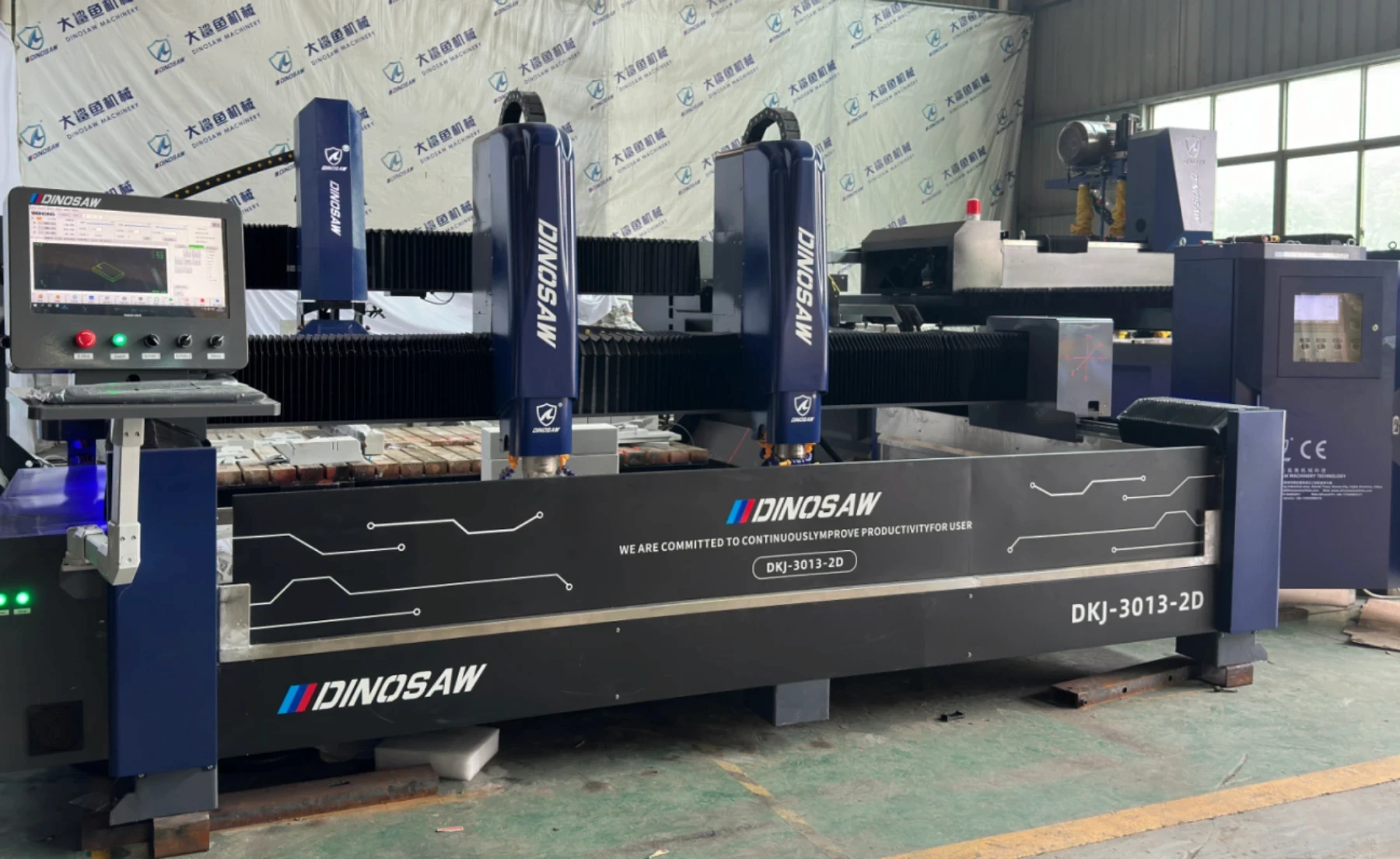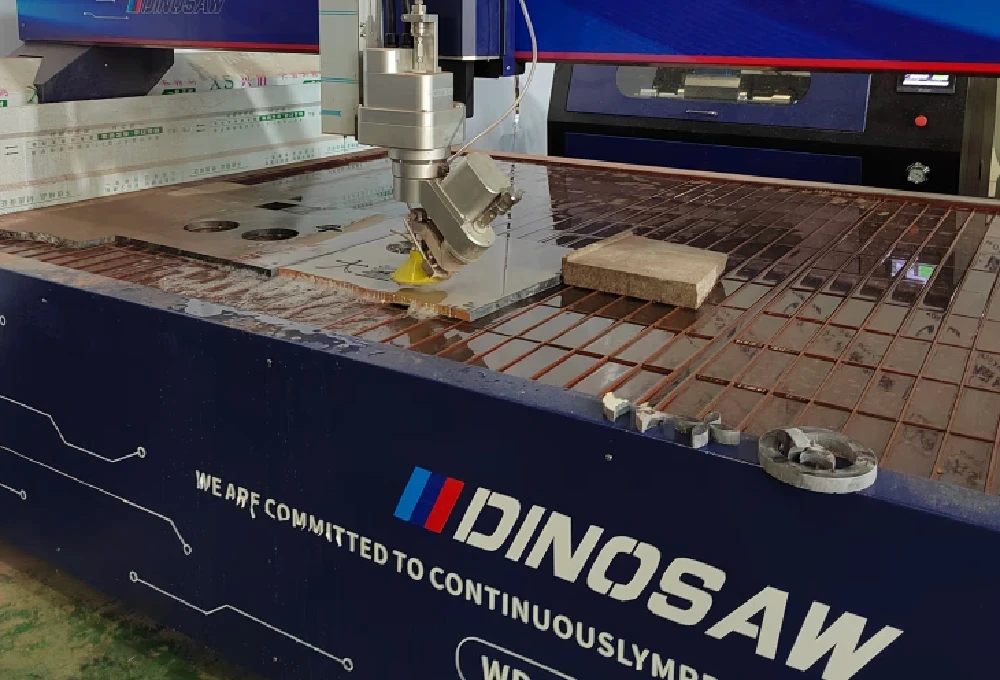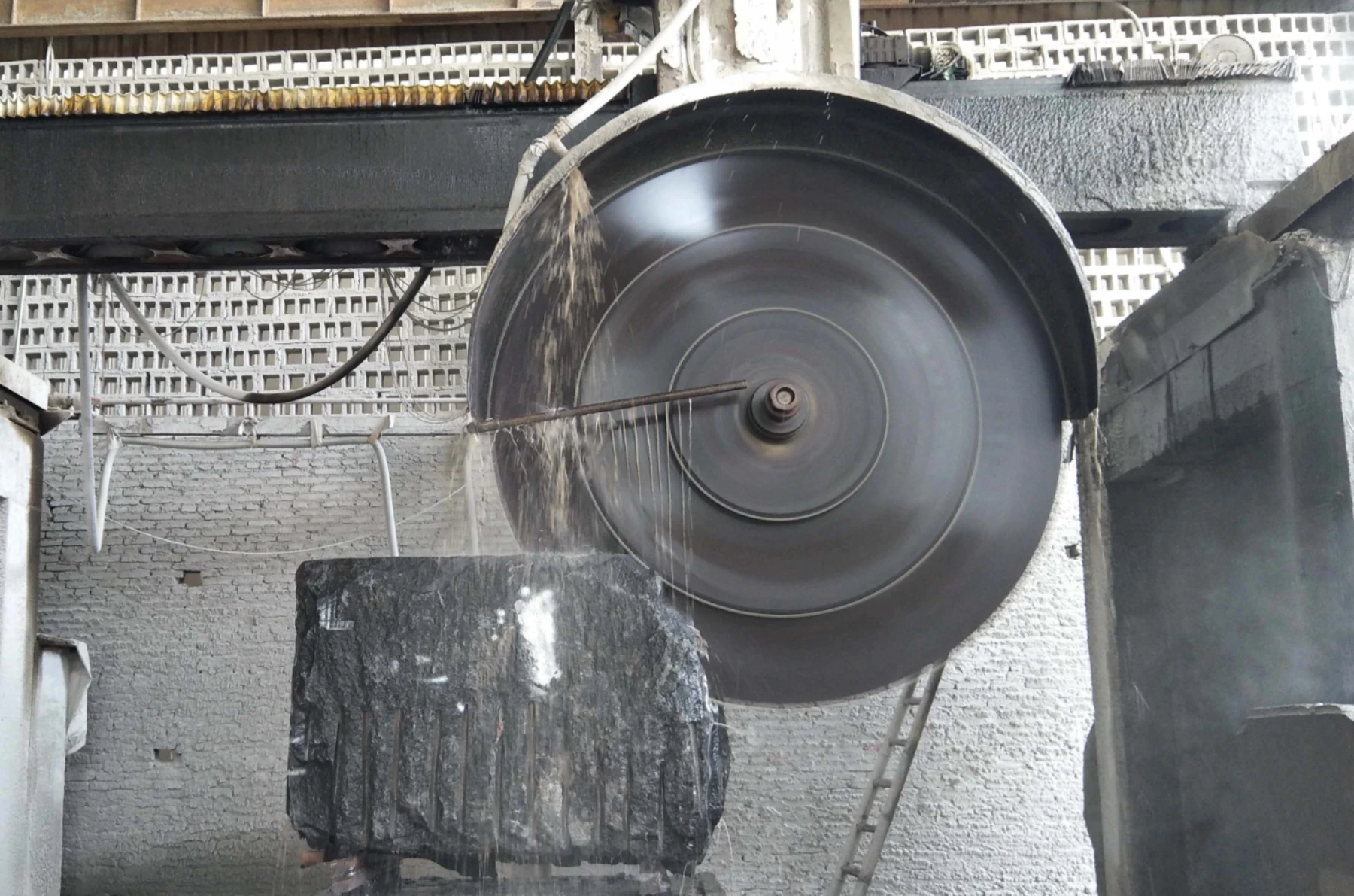Last Updated:
2025-01-15
Last Updated:
2025-01-15
Open Hours:
8:30am-20:30pm
Whatsapp:
Open Hours:
8:30am-20:30pm
Whatsapp:

Stone Grinding & Polishing Machines for Surface and Edge
DINOSAW offers stone grinding and polishing machines, from CNC automatic systems to manual equipment. Our machines serve both production lines and workshops, processing materials like granite, marble, quartz, jade, sintered stone, metal and glass. These machines handle edge grinding, slab polishing, surface leveling, and decorative finishing.

steel

Granite

Marble

limestone

concrete

aluminum
Last Updated:
2025-04-15

Stone Grinding & Polishing Machines for Surface and Edge
DINOSAW offers stone grinding and polishing machines, from CNC automatic systems to manual equipment. Our machines serve both production lines and workshops, processing materials like granite, marble, quartz, jade, sintered stone, metal and glass. These machines handle edge grinding, slab polishing, surface leveling, and decorative finishing.

steel

Granite

Marble

limestone

concrete

aluminum
Last Updated:
2025-04-15

Last Updated:
2025-04-15
Stone Grinding & Polishing Machines for Surface and Edge
DINOSAW offers stone grinding and polishing machines, from CNC automatic systems to manual equipment. Our machines serve both production lines and workshops, processing materials like granite, marble, quartz, jade, sintered stone, metal and glass. These machines handle edge grinding, slab polishing, surface leveling, and decorative finishing.

steel

Granite

Marble

limestone

concrete

aluminum
Automatic Polishing & Grinding Machine
Automatic Polishing & Grinding Machine
Automatic polishing machines come in three main types: bridge-type for large slabs, continuous line for production efficiency, and edge polishers for profile work.
Key features include CNC & PLC control systems, multi-head configurations and polishing sequence settings. All models have multi-language support .
Compatible materials include marble, granite, limestone, travertine, onyx, glass, sintered stone, engineered quartz, porcelain, aluminum, and stainless steel.
Applications include countertop production, architectural cladding, decorative edge profiles, furniture components, and surface finishes like antiqued, brushed, or leathered textures.
Automatic polishing machines come in three main types: bridge-type for large slabs, continuous line for production efficiency, and edge polishers for profile work.
Key features include CNC & PLC control systems, multi-head configurations and polishing sequence settings. All models have multi-language support .
Compatible materials include marble, granite, limestone, travertine, onyx, glass, sintered stone, engineered quartz, porcelain, aluminum, and stainless steel.
Applications include countertop production, architectural cladding, decorative edge profiles, furniture components, and surface finishes like antiqued, brushed, or leathered textures.
Manual Stone Polishing Machines
Manual Stone Polishing Machines
Manual polishing machines include two main types: surface grinders (for flat surface grinding) and edge polishers (for edge grinding). These compact, space-saving tools take up minimal floor space in workshops and fabrication areas.
These cost-effective machines offer flexibility for small-scale operations and custom projects, requiring less investment .
Compatible materials include marble, granite, limestone, travertine, onyx, sandstone, slate, and other natural stones.
Applications include standard-sized slab polishing, countertop finishing, kitchen island surface processing, bathroom vanity production, stone stair tread polishing, window sill smoothing, and fireplace surround fabrication.
Manual polishing machines include two main types: surface grinders (for flat surface grinding) and edge polishers (for edge grinding). These compact, space-saving tools take up minimal floor space in workshops and fabrication areas.
These cost-effective machines offer flexibility for small-scale operations and custom projects, requiring less investment .
Compatible materials include marble, granite, limestone, travertine, onyx, sandstone, slate, and other natural stones.
Applications include standard-sized slab polishing, countertop finishing, kitchen island surface processing, bathroom vanity production, stone stair tread polishing, window sill smoothing, and fireplace surround fabrication.
What Are Grinding and Polishing Machines?
What Are Grinding and Polishing Machines?
Grinding and polishing machines are specialized tools designed for surface and edge finishing.
These machines perform diverse tasks, such as achieving smooth, glossy finishes on surfaces, crafting custom edge profiles like bullnose or ogee, and enhancing the aesthetics of architectural and decorative items.
Dinosaw offers two primary machine types. Automatic polishing machines are ideal for high-volume, consistent processing, while manual polishing machines are perfect for small-batch and customized tasks.
Grinding and polishing machines are specialized tools designed for surface and edge finishing.
These machines perform diverse tasks, such as achieving smooth, glossy finishes on surfaces, crafting custom edge profiles like bullnose or ogee, and enhancing the aesthetics of architectural and decorative items.
Dinosaw offers two primary machine types. Automatic polishing machines are ideal for high-volume, consistent processing, while manual polishing machines are perfect for small-batch and customized tasks.

Polishing Machine Success Cases
Customer Projects & Results

Polishing Machine Success Cases
Customer Projects & Results

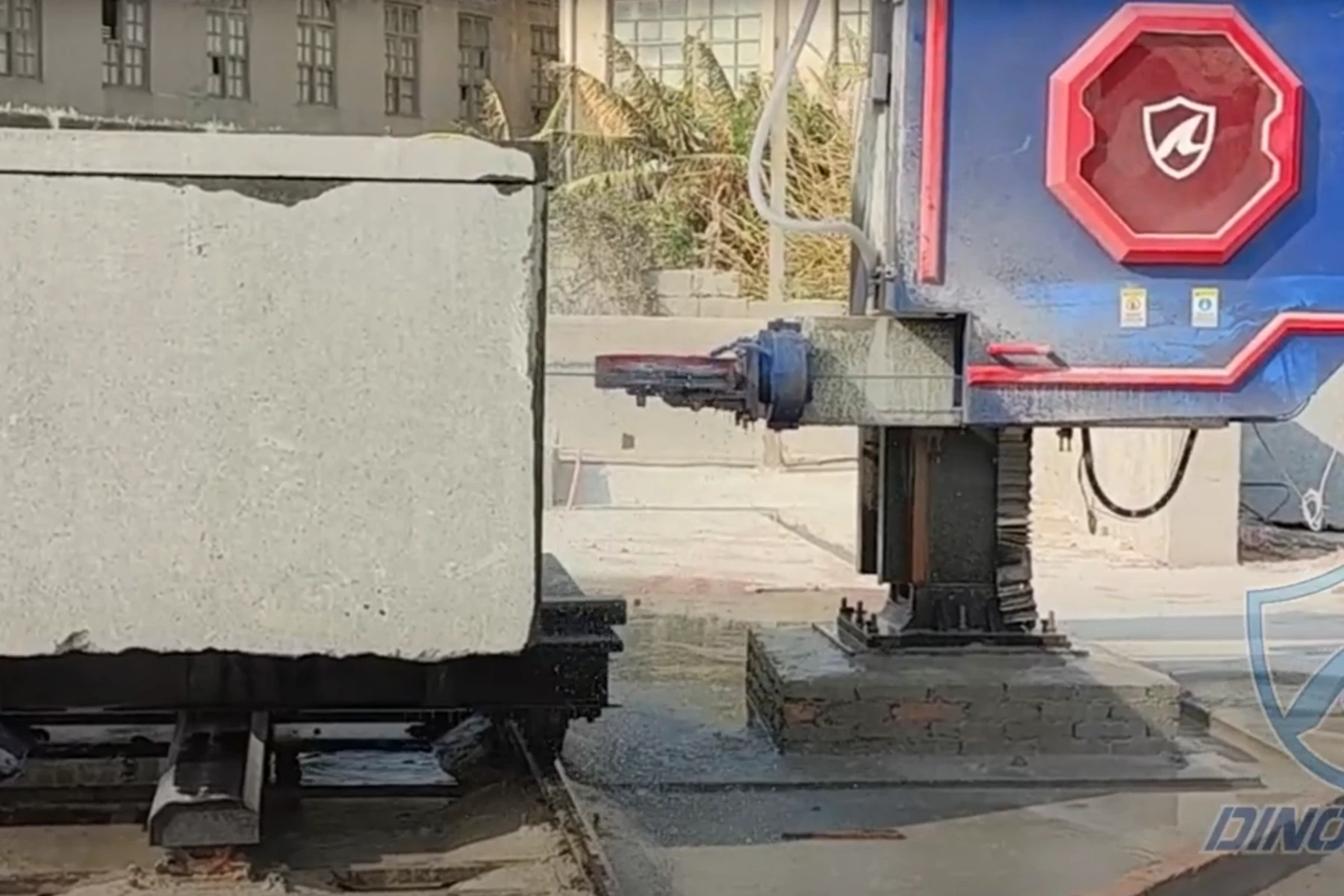
Granite Slab Cutting Case - CNC Wire Saw Machine Supports Egyptian Factory

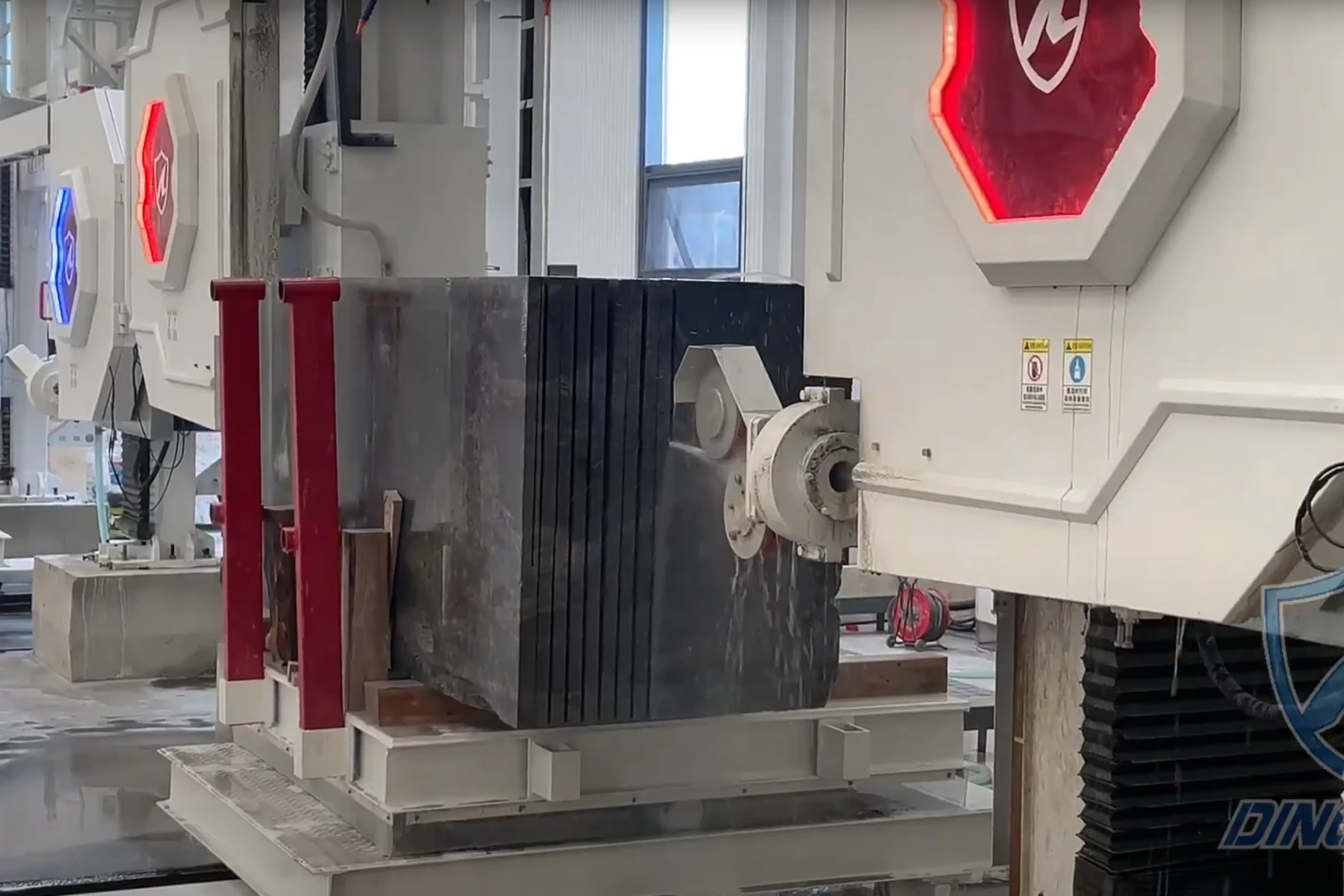
Marble Block Slab Cutting Case - CNC Wire Saw Machine Supports Spanish Factory

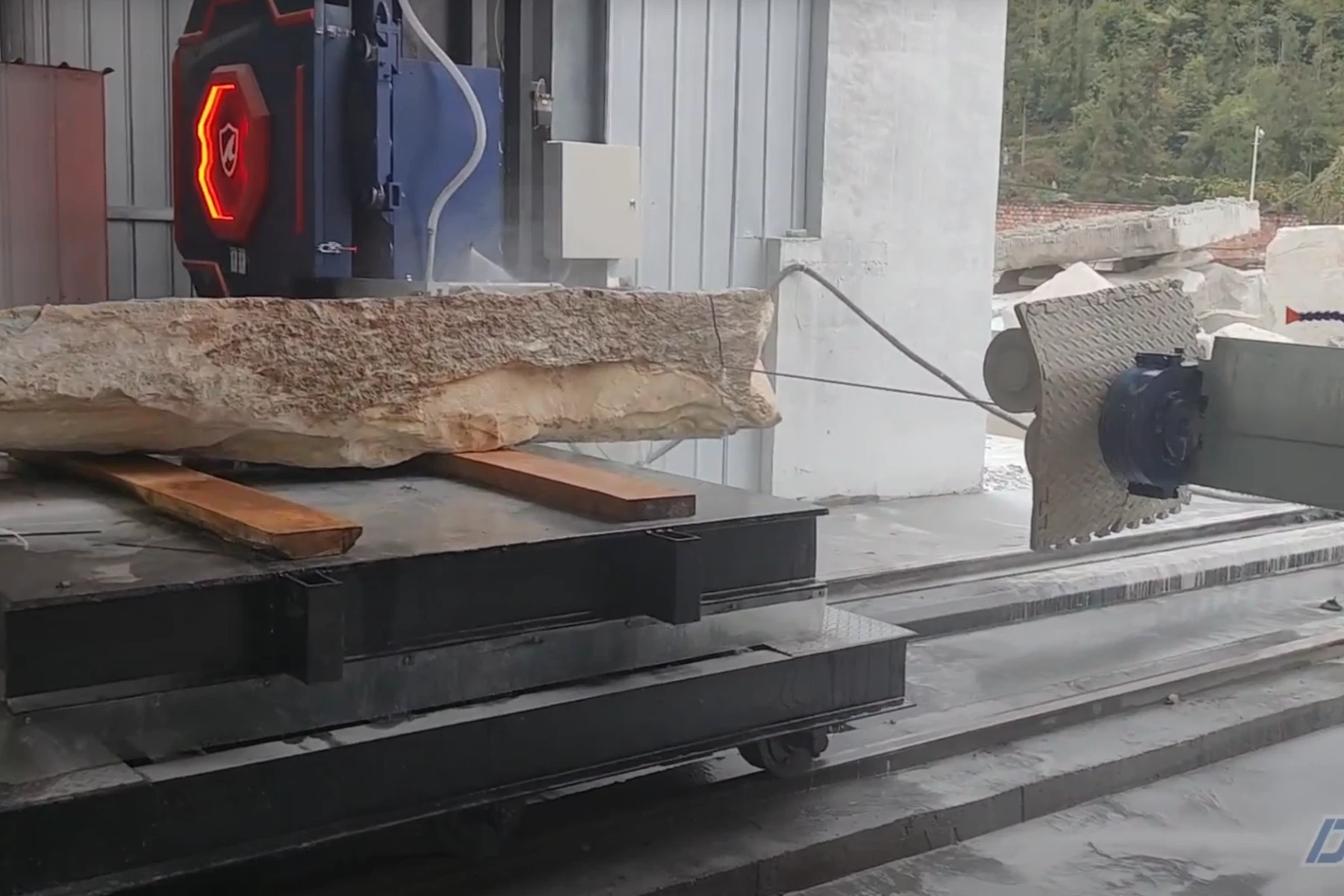
Marble Shaped Cutting Case - CNC Wire Saw Machine Supports Brazilian Factory

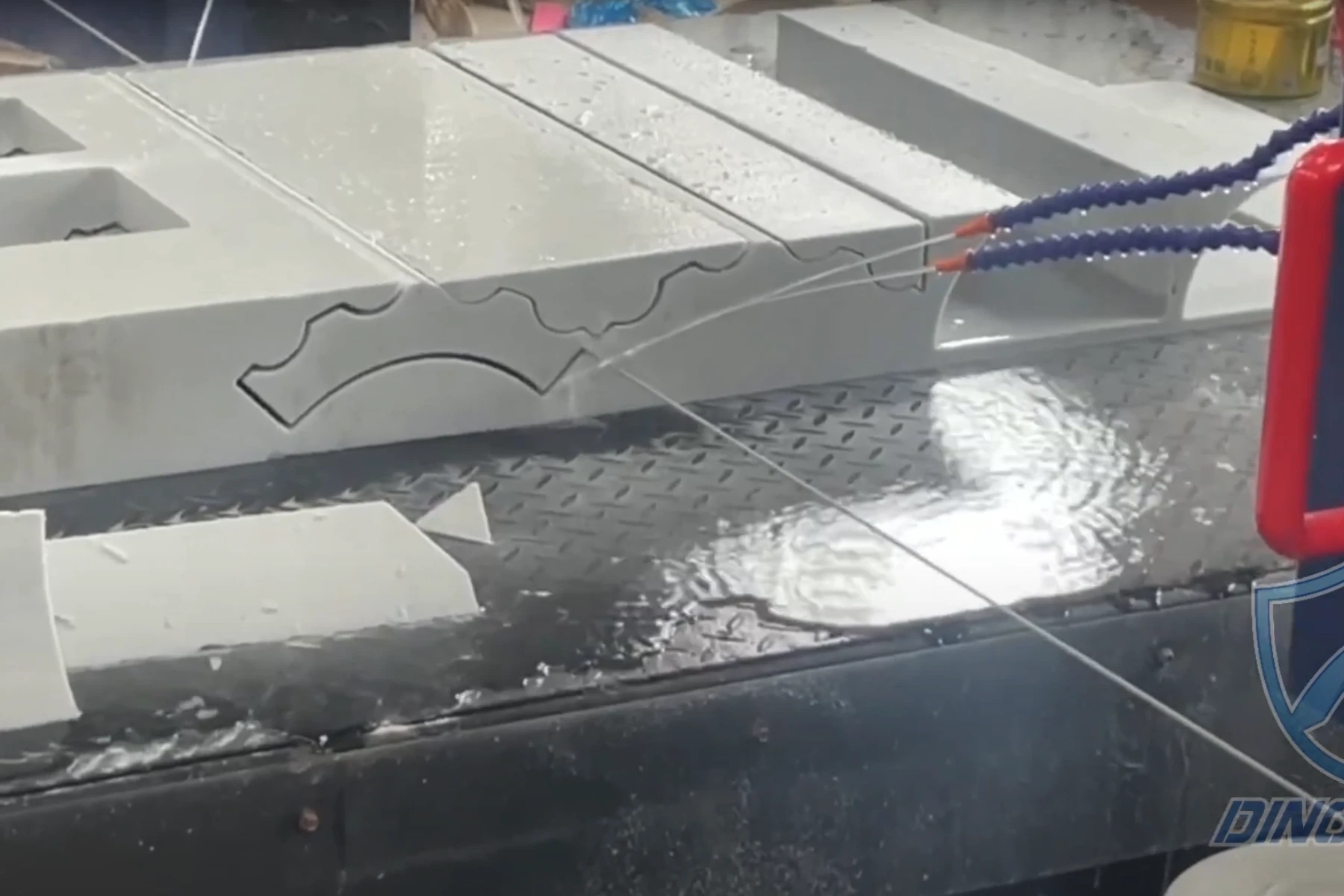
Roman Column Production Case - CNC Wire Saw Machine Supports Russian
More
Stone Polishing Video Training
Stone Polishing Video Training
How To Achieve Perfect Finishing
How To Achieve Perfect Finishing

Polishing Technology News
Equipment Reviews & Updates

Polishing Technology News
Equipment Reviews & Updates
Steps to Purchasing Your Ideal Grinding and Polishing Machine
Steps to Purchasing Your Ideal Grinding and Polishing Machine

Step 1: Define Your Stone Processing & Material Requirements
Start by identifying the specific stone materials you'll process (marble, granite, travertine, limestone, etc.) and determine their hardness ratings (Mohs scale 3-7). For hard materials like granite (6-7 Mohs), select machines with higher power motors and diamond abrasives. For softer stones like marble (3-4 Mohs), standard configurations work well.
Clearly define your processing needs: surface polishing for countertops and flooring, edge grinding for profiles, or specialty finishing like antiquing or leathering. Measure your typical slab dimensions and thickness (standard 2-3cm or jumbo 3+ cm) to ensure proper machine capacity.
Step 2: Evaluate Your Stone Production Volume & Workshop Capacity
Calculate your daily stone processing requirements in square meters or number of slabs. High-volume fabrication shops should invest in automatic CNC polishing machines with multiple heads for efficiency.
Small workshops handling custom stone projects will find manual polishing machines more cost-effective. Also measure your workshop space—automatic polishers require larger areas with proper water supply and drainage, while manual units need minimal operating space.
Step 3: Compare Automatic vs. Manual Stone Polishing Systems
Automatic stone polishing machines deliver consistent finishing quality across large batches with programmable CNC/PLC systems—ideal for commercial countertop production lines. They significantly reduce labor costs for high-volume operations through automated processing.
Manual stone polishers come in both surface grinding and edge grinding types, excelling in custom edge profiles, detail work, and specialized finishes like bullnose or ogee edges. Their main advantages are lower investment costs, greater flexibility for unique stone projects, and minimal space requirements. For versatile workshops, consider a combination: automatic machines for high-volume work and manual equipment for custom finishing.
Step 4: Analyze Technical Specifications for Stone Grinding Equipment
For automatic stone polishers, compare critical specifications: motor power (10-30kW total), number of polishing heads (4-12), working table dimensions (typically 3200×2000mm for standard slabs), spindle rotation speed (300-1400 RPM), and water consumption (80-150L/min). Verify the CNC/PLC system interfaces, available program storage capacity, and multi-language support for operators.
For manual stone grinding machines, evaluate motor power (1.5-3kW), tool rotation speeds (variable 1000-4500 RPM), water feed systems (gravity or pump-assisted), and weight (15-45kg for handheld units). Also compare the availability of specialized attachments for different edge profiles and surface textures.
Step 5: Calculate Total Stone Fabrication Costs & ROI
When choosing stone processing equipment, consider the total cost of ownership. This includes the initial investment (manual units cost significantly less than automatic systems), installation, consumables (diamond pads), electricity usage, water systems, and maintenance.
The main advantage of manual machines is their much lower upfront cost and faster return on investment for small workshops. Automatic systems require higher initial investment but can be cost-effective for high-volume operations through labor savings and increased productivity. Consider both your immediate budget constraints and long-term production goals when making your decision.
Step 6: Connect with DINOSAW Stone Machinery Experts
Our specialized stone equipment engineers can help evaluate your specific workshop requirements and material processing needs. We'll provide detailed machinery recommendations based on your production volume, material types, and finish quality standards. Contact us for personalized guidance on selecting the optimal granite polishing machine or marble edge grinding system for your application.
We offer comprehensive support including technical specifications, custom quotations, on-site demonstrations, delivery logistics, installation planning, operator training programs, and ongoing technical support. With 20+ years of industry expertise, we'll ensure you select the perfect stone processing solution for your fabrication business.
Step 1:
Define Your Stone Processing & Material Requirements
Start by identifying the specific stone materials you'll process (marble, granite, travertine, limestone, etc.) and determine their hardness ratings (Mohs scale 3-7). For hard materials like granite (6-7Mohs), select machines with higher power motors and diamond abrasives. For softer stones like marble (3-4Mohs), standard configurations work well.
Clearly define your processing needs: surface polishing for countertops and flooring, edge grinding for profiles, or specialty finishing like antiquing or leathering. Measure your typical slab dimensions and thickness (standard 2-3cm or jumbo 3+ cm) to ensure proper machine capacity.
Step 2:
Evaluate Your Stone Production Volume & Workshop Capacity
Calculate your daily stone processing requirements in square meters or number of slabs. High-volume fabrication shops should invest in automatic CNC polishing machines with multiple heads for efficiency.
Small workshops handling custom stone projects will find manual polishing machines more cost-effective. Also measure your workshop space—automatic polishers require larger areas with proper water supply and drainage, while manual units need minimal operating space.
Step 3:
Compare Automatic vs. Manual Stone Polishing Systems
Automatic stone polishing machines deliver consistent finishing quality across large batches with programmable CNC/PLC systems—ideal for commercial countertop production lines. They significantly reduce labor costs for high-volume operations through automated processing.
Manual stone polishers come in both surface grinding and edge grinding types, excelling in custom edge profiles, detail work, and specialized finishes like bullnose or ogee edges. Their main advantages are lower investment costs, greater flexibility for unique stone projects, and minimal space requirements. For versatile workshops, consider a combination: automatic machines for high-volume work and manual equipment for custom finishing.
Step 4:
Analyze Technical Specifications for Stone Grinding Equipment
For automatic stone polishers, compare critical specifications: motor power (10-30kW total), number of polishing heads (4-12), working table dimensions (typically 3200×2000mm for standard slabs), spindle rotation speed (300-1400 RPM), and water consumption (80-150L/min). Verify the CNC/PLC system interfaces, available program storage capacity, and multi-language support for operators.
For manual stone grinding machines, evaluate motor power (1.5-3kW), tool rotation speeds (variable 1000-4500 RPM), water feed systems (gravity or pump-assisted), and weight (15-45kg for handheld units). Also compare the availability of specialized attachments for different edge profiles and surface textures.
Step 5:
Calculate Total Stone Fabrication Costs & ROI
When choosing stone processing equipment, consider the total cost of ownership. This includes the initial investment (manual units cost significantly less than automatic systems), installation, consumables (diamond pads), electricity usage, water systems, and maintenance.
The main advantage of manual machines is their much lower upfront cost and faster return on investment for small workshops. Automatic systems require higher initial investment but can be cost-effective for high-volume operations through labor savings and increased productivity. Consider both your immediate budget constraints and long-term production goals when making your decision.
Step 6:
Connect with DINOSAW Stone Machinery Experts
Our specialized stone equipment engineers can help evaluate your specific workshop requirements and material processing needs. We'll provide detailed machinery recommendations based on your production volume, material types, and finish quality standards. Contact us for personalized guidance on selecting the optimal granite polishing machine or marble edge grinding system for your application.
We offer comprehensive support including technical specifications, custom quotations, on-site demonstrations, delivery logistics, installation planning, operator training programs, and ongoing technical support. With 20+ years of industry expertise, we'll ensure you select the perfect stone processing solution for your fabrication business.


CONTINUOUSLY IMPROVE PRODUCTIVITY FOR USER
Customer first | Teamwork | Embrace change | Integrity | Passion | Commitment
CONTINUOUSLY IMPROVE PRODUCTIVITY FOR USER
Customer first | Teamwork | Embrace change | Integrity | Passion | Commitment
CONTINUOUSLY IMPROVE PRODUCTIVITY FOR USER
Customer first | Teamwork | Embrace change | Integrity | Passion | Commitment
CONTINUOUSLY IMPROVE PRODUCTIVITY FOR USER
Customer first | Teamwork | Embrace change | Integrity | Passion | Commitment
CONTINUOUSLY IMPROVE PRODUCTIVITY FOR USER
Customer first | Teamwork | Embrace change | Integrity | Passion | Commitment

Hello 👋 How can we help?

Hello 👋 How can we help?

Hello 👋 How can we help?





